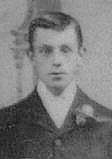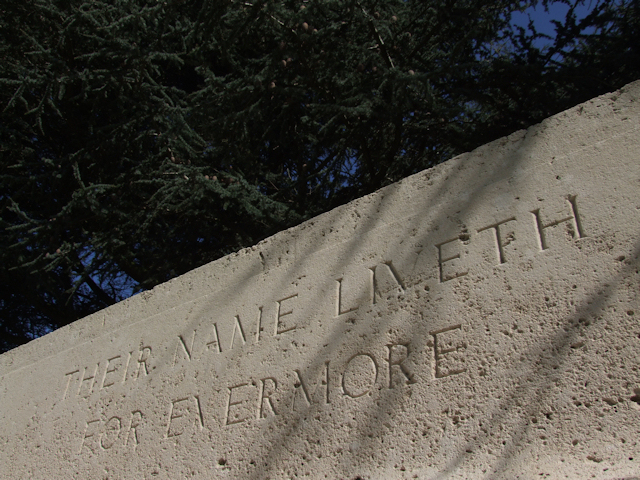Name
William George Pearce
Conflict
First World War
Date of Death / Age
Rank, Service Number & Service Details
Sapper
546565
Royal Engineers
1/2nd London Field Company
Awards: Service Medals/Honour Awards
Cemetery/Memorial: Name/Reference/Country
Headstone Inscription
Not Researched
UK & Other Memorials
NA
Biography
During the research for the book, no records for William were found, however in 2012 William’s grandson, Stephen Pearce who lives in Australia, drew our attention to his omission and supplied almost all of the information that follows. He was also able to bring our attention to William’s brother (Stephen’s great uncle) who was killed and is not listed on Pirton’s war memorial – his information should appear in the ‘Should These Names Be On Our War Memorial?’ chapter.
William was born in Pirton on May 19th 1879 to Isaac (Ike) and Priscilla Pearce (née Mitchell). Baptism and census records list five children: William George (b 1879), Thomas (b 1882), Ernest (b 1885), John (b 1887) and Alfred (b 1891). Although not listed on the School War Memorial, William did attend and was known to be proud of his Pirton roots.
The 1881 census records the family as living at 12 The Grange, although Isaac was working in Holloway, North London as a general labourer and absent. Their family life in London started in 1882, living in one room of a house on George’s Road, Holloway and then in 1885 to 16 Hatley Road, in the parish of St Anne’s, Poole’s Park, Finsbury Park – this was a area know as ‘Campbell Bunk’*1 - a congested and very poor area and a huge contrast to the rural life of Pirton. In 1897 the family were living in 99 Campbell Road, Finsbury Park and then by 1899 St Anne’s Parish, then in Edmonton, later in South Tottenham and nowadays part of Haringey. This was a marked improvement in their circumstances.
In 1902 William, then 23, returned to Finsbury Park moving into a men’s hostel at 60 Holloway Road and was working as a warehouseman. He met Nellie Barrett (Nellie Louisa Margaret), who was working at the hostel as a chamber maid. They married in July 1904 and moved into a cottage at the rear of the hostel. By 1914 they also had five children; Nellie (Nell, b 1905), William George (b 1906), Charles (b 1907), Edith Francis (b1910) and Arthur (b 1911). Sadly Edith died of whooping cough in 1911 before Arthur’s birth. The family was mobile during this time, although never moving far; they moved from 60 Holloway Road to 53, then to 58 Poole’s Park Road, Finsbury Park and yet again, this time to 15 Playford Road (formerly Palmerston) - still in the same locality. It was here that another son Alfred James was born on April 3rd1916.
When war came, and even though he was married with a large family, William would have felt the pressure to enlist and so he did, in the 3/1st London Divisional Engineers on the July 8th 1915. He became Sapper 2569 (later 546565). His attestation papers confirm his age as 36, he was 5’ 6” tall and had been working as a house painter. It is not clear when he went to France but it was normal to spend at least six months in training.
At some point he would have joined the 56th (1st London) Division. It was formed in February 1916 from battalions that had already served on the Western Front, but that had already been decimated, and Kitchener’s volunteers. They spent time behind the lines, west of Arras and William was transferred to the 1/2nd London Field Company in March 1916, and then at the beginning of May, they were ordered to the trenches at Hebuterne and certainly William would have been with them then.
William and his comrades joined the Battle of the Somme at Gommecourt within five days of the offensive’s launch on July 5th 1916. He may well have been with the men of the 1/2nd Londoners who were try to get men and supplies across to support the London Rifle Brigade. They tried three times, each time they were cut to pieces by machine guns and artillery fire. Indeed it was a machine gun which caused William’s injuries and they were serious, he was hit badly in the right shoulder blade, but it was a ‘Blighty wound’ - much wished for by men who had had enough of the war.
He was taken first to a hospital at Casino du Palais, Le Touquet and was fit enough to travel, or perhaps more accurately his bed may have been needed by those in a worse condition from the carnage of the opening days of the battle and who could not be moved on. He embarked for England on July 13th on the Hospital Ship Brighton and went straight to Leicester Military Hospital, arriving on the 14th. He was not discharged until September 27th.
To put the wound in perspective it had got him home, but he had been very lucky - his daughter, Ivy, remembers that when she was five, that would be 1931, that the that “the scar to his shoulder was sufficiently large enough to place her fist inside!”, but he did not claim any disability.
After leaving hospital, and presumably some leave, he was transferred to the 1st Field Company on October 6th 1916. His service details then become vague, but he certainly got in to trouble with the authorities and three occasions; two marching disciplinary offences in Esher on May 25th 1917 and then on September 20th 1918, the third offence was for ‘Stating a falsehood’ to the military police and also on the latter date. For the last two he received three days Field Punishment Number Two (*2) and open arrest. In this form of field punishment, the prisoner was placed in fetters and handcuffs, but was not attached to a fixed object, as was the case with a ‘Number One’ and was able to march with his unit. He would also have been subjected to hard labour and loss of pay.
Although the family thought that he did not return to France, his war service records show, in very faint writing, that he went to Chatham on April 24th 1918 and on another page, but on the same date, it appears to say ‘To BEF France’. This was only four weeks after the Germans had launched their great spring offensive, so William may have been caught up in the rush to supply reinforcements and it may have been a case of whoever was fit enough to hold a gun. In even fainter writing something seems to have occurred on May 11th 1918, perhaps sickness or another wound? So his return was very brief.
He was given 14 days leave in January 1919 and, after what must to him have seemed an unreasonable delay, finally discharged on July 17th 1919.
After the war William and Nellie’s family continued to expand; Winifred (b 1919), John (b 1922), Rose (b 1925), Ivy (b 1926) and Hannah (b 1929). By Winnie’s birth they had escaped the squalor of ‘The Bunk’ and moved to 4 James Street. Other moves followed; 61 St Paul’s Road, Islington (1929), 34 Liverpool Road (1931), 8 Vale Road (1933) and one last move, to 91 Raleigh Road, Turnpike Lane, when with the help of his son, also William, they finally bought their own home.
Incredibly, although ten children are listed above, the family know of at least one more pregnancy, twins who both died, Nellie was 4’ 7” and six stone, she must have been resilient and long suffering.
*1 Stephen is researching and writing a novel about Campbell Bunk, which is an area that many Pirton people moved to.
*2 Field Punishment Number Two, the prisoner was placed in fetters and handcuffs but was not attached to a fixed object (unlike No. 1) and was still able to march with his unit.
Additional Information
Text from the book ‘The Pride of Pirton’ by Jonty Wild, Tony French & Chris Ryan used with author's permission
Acknowledgments
Text from the book ‘The Pride of Pirton’ by Jonty Wild, Tony French & Chris Ryan used with author's permission, Stephen Pearce



